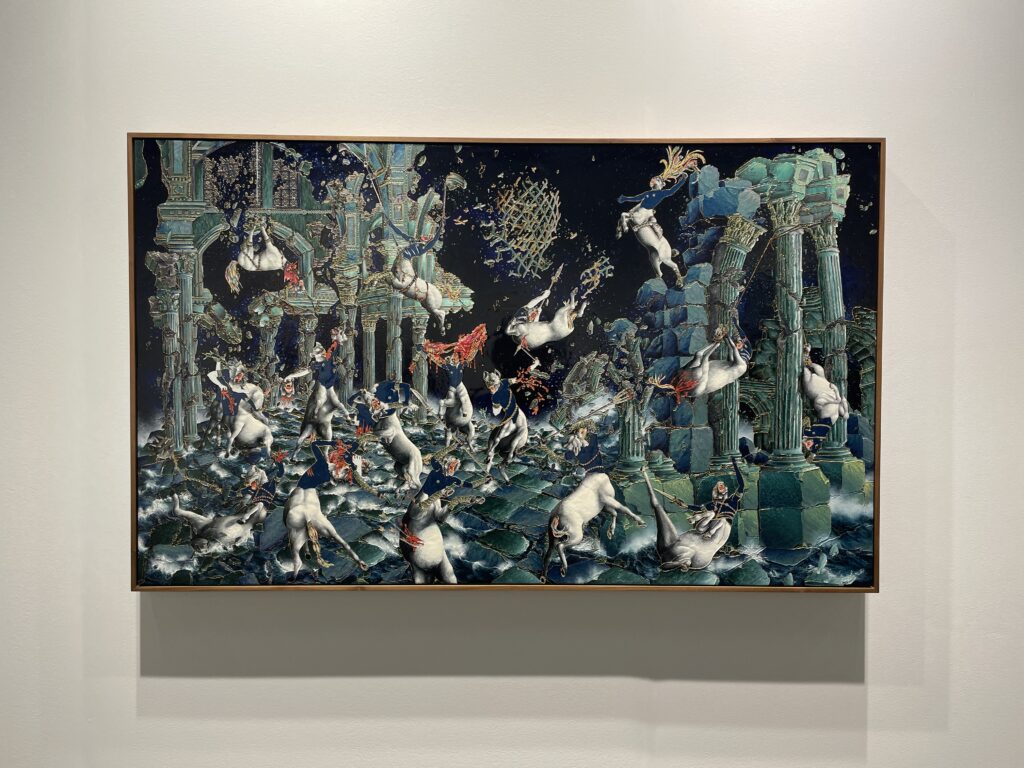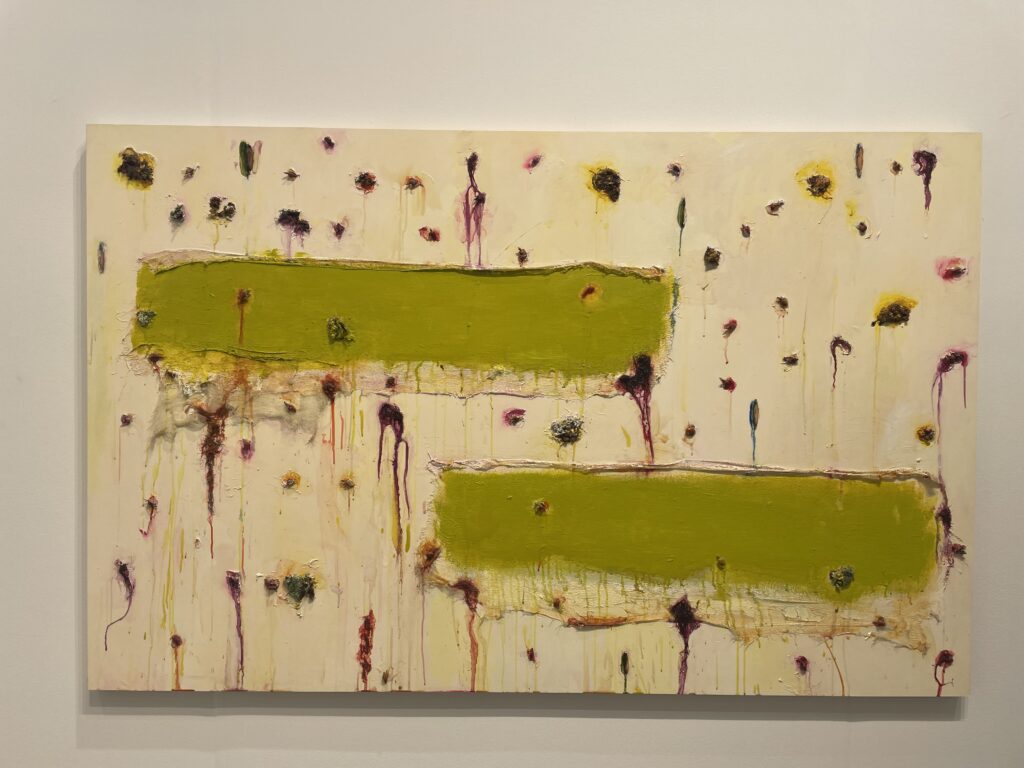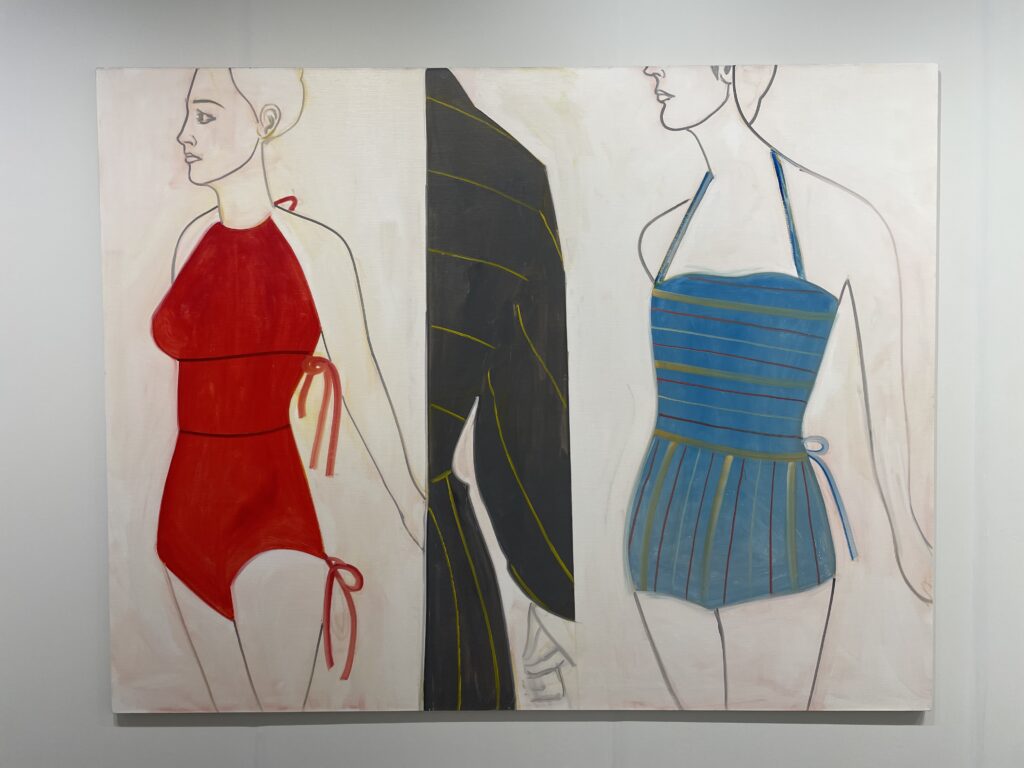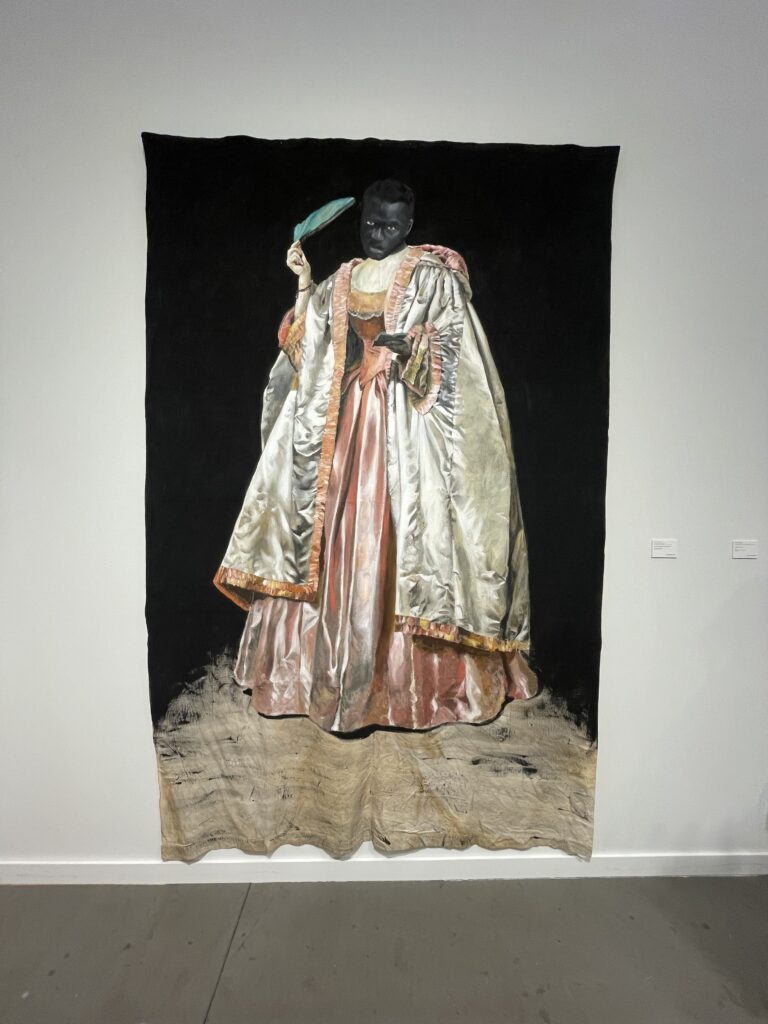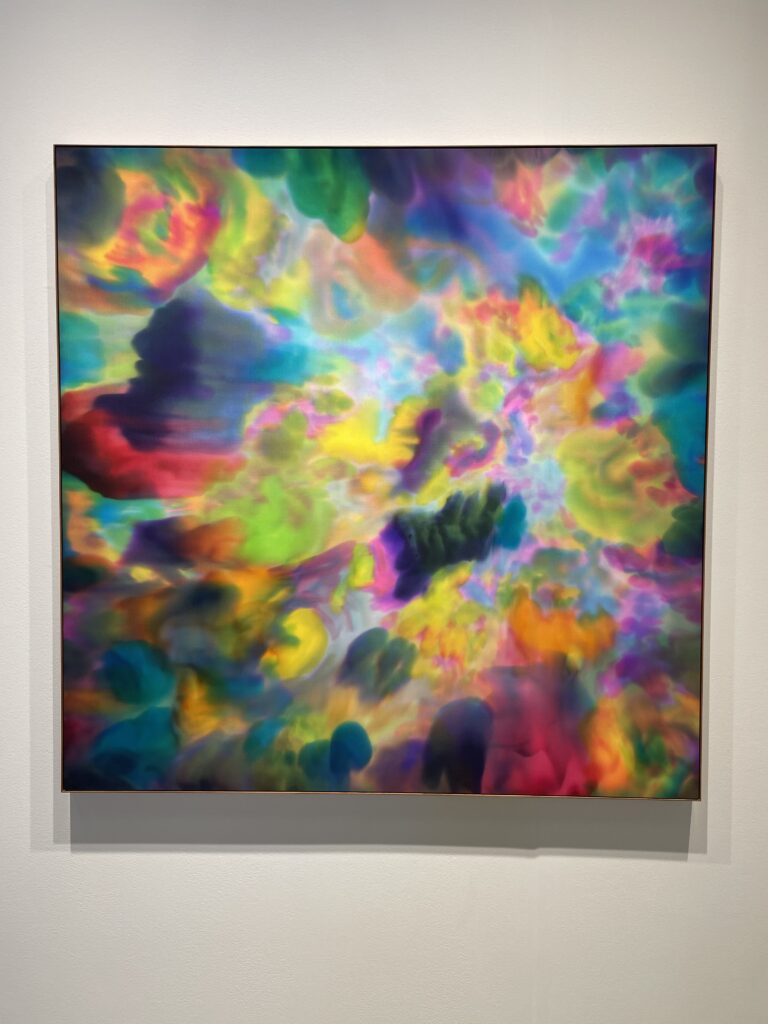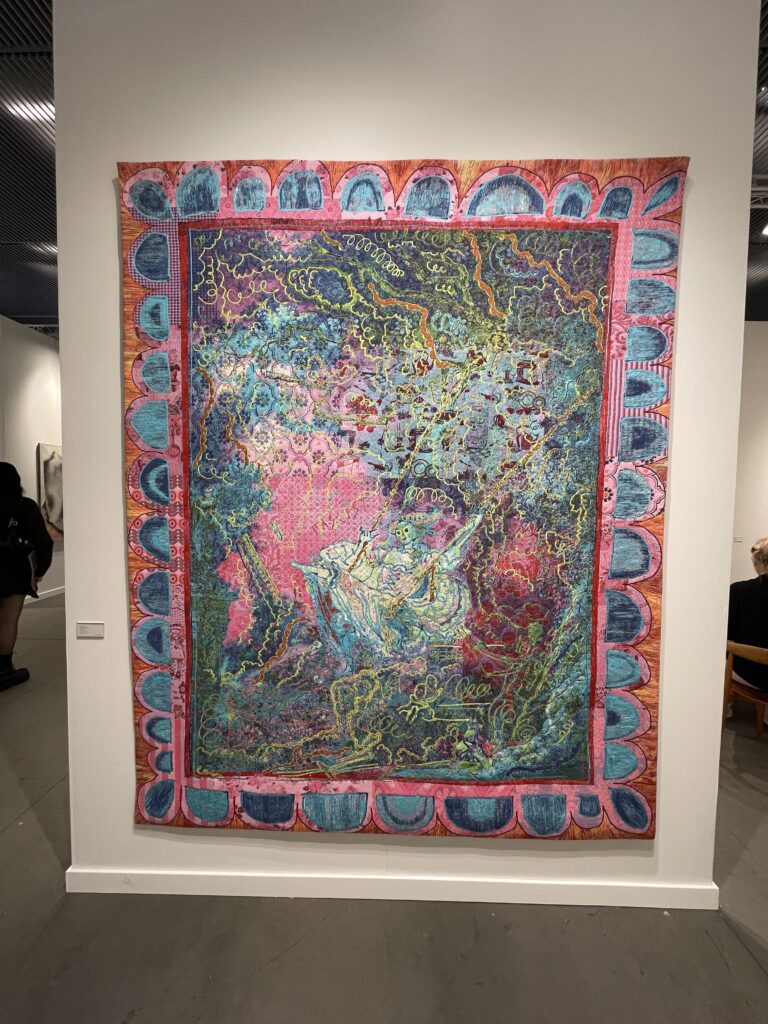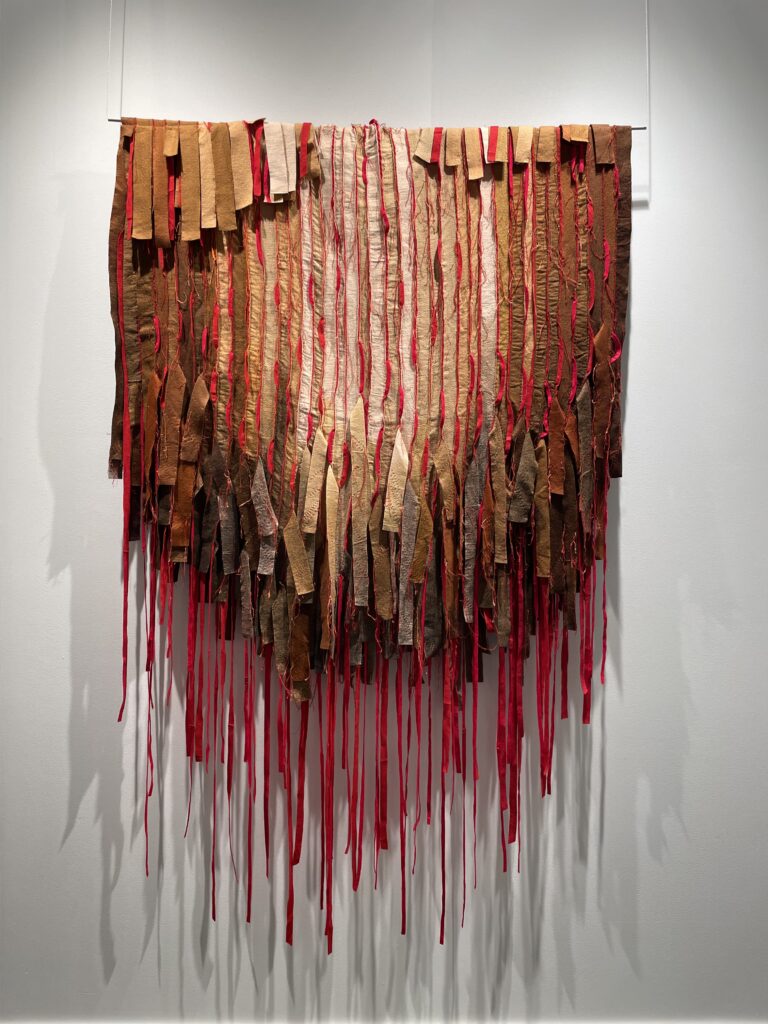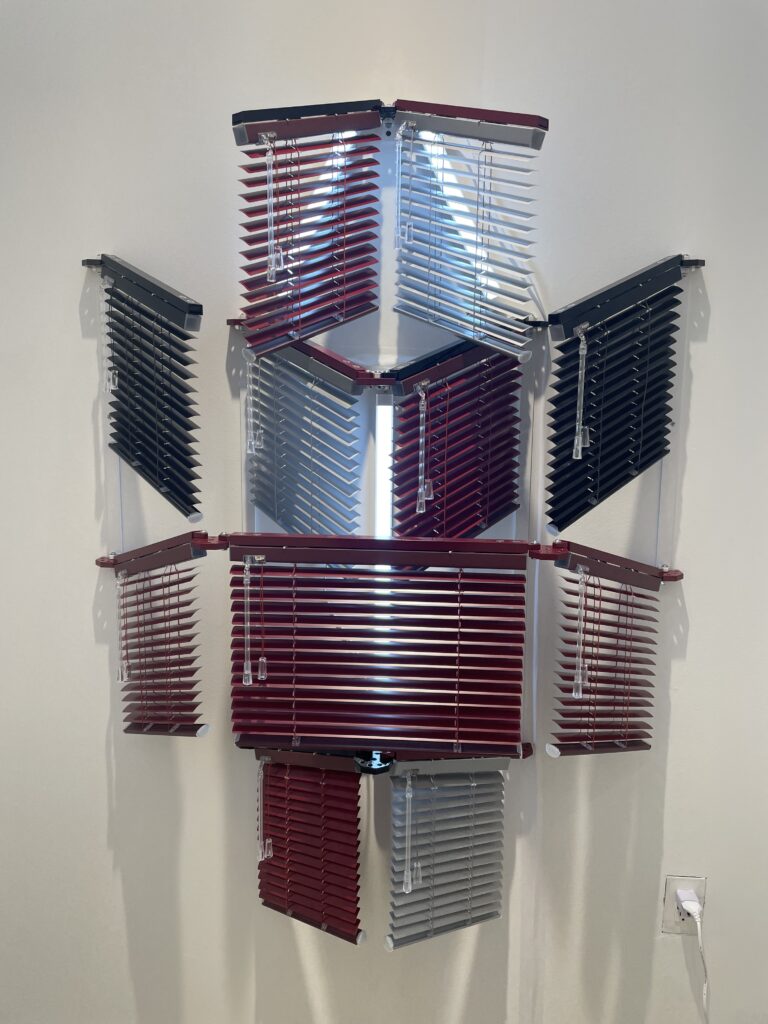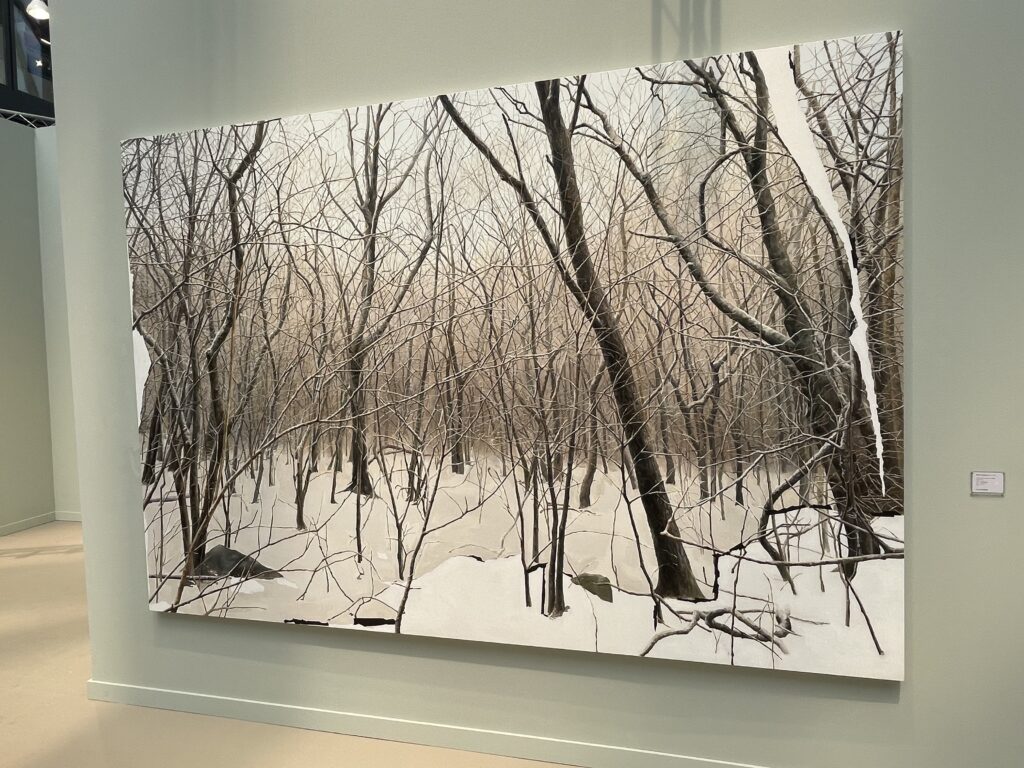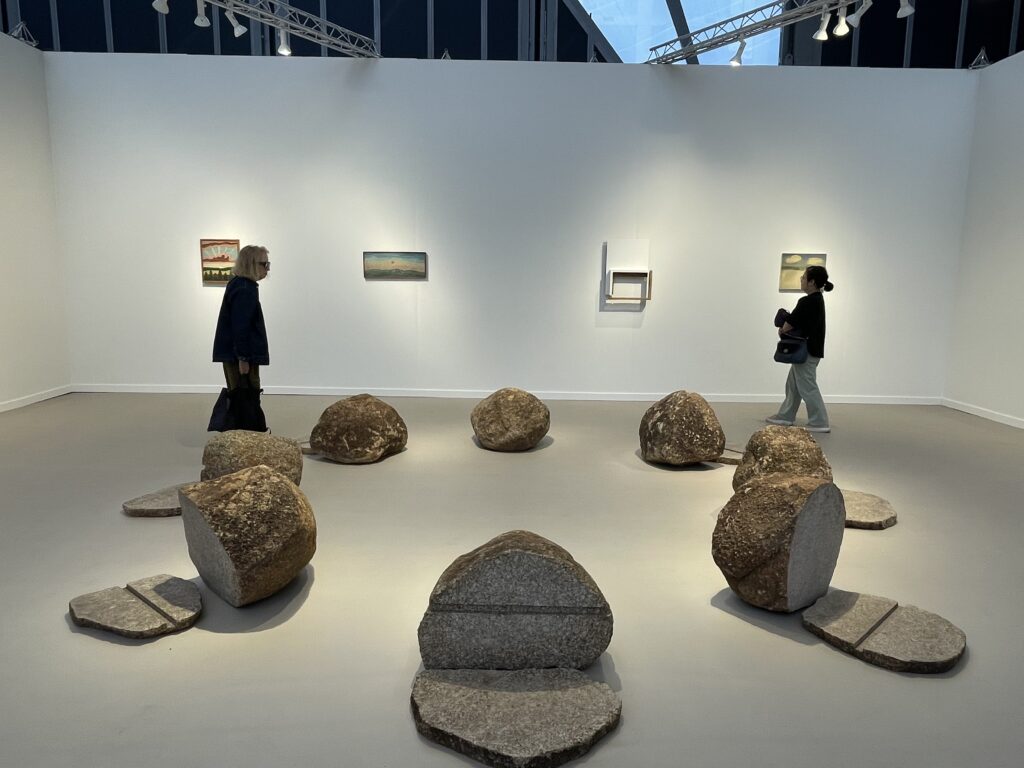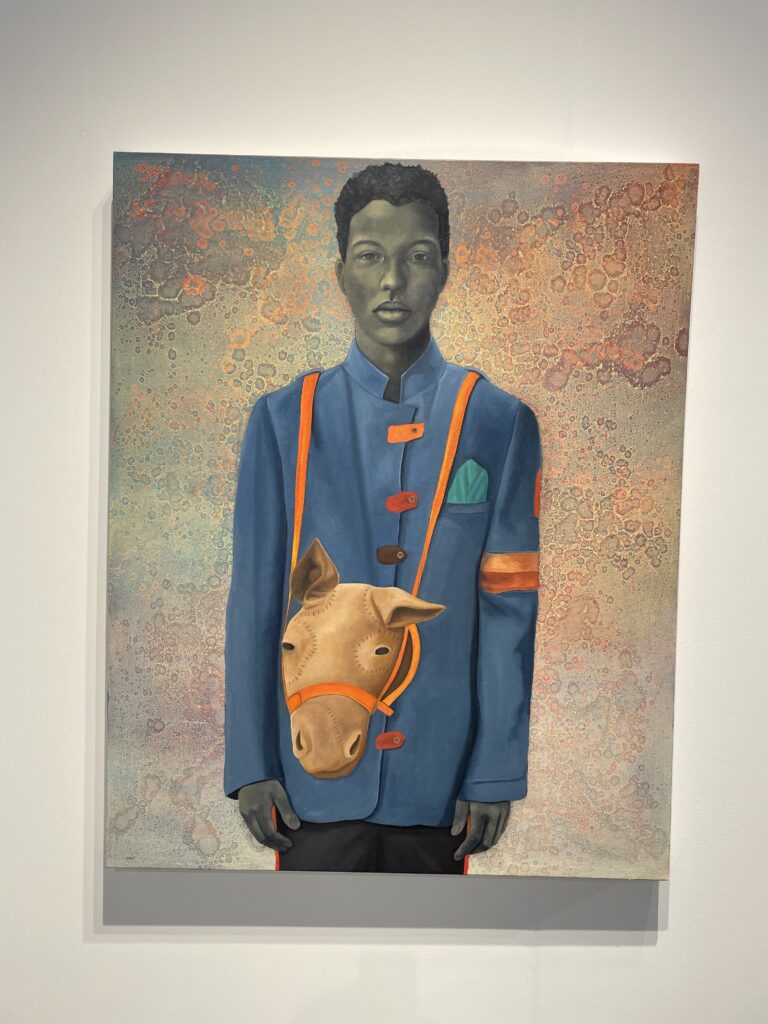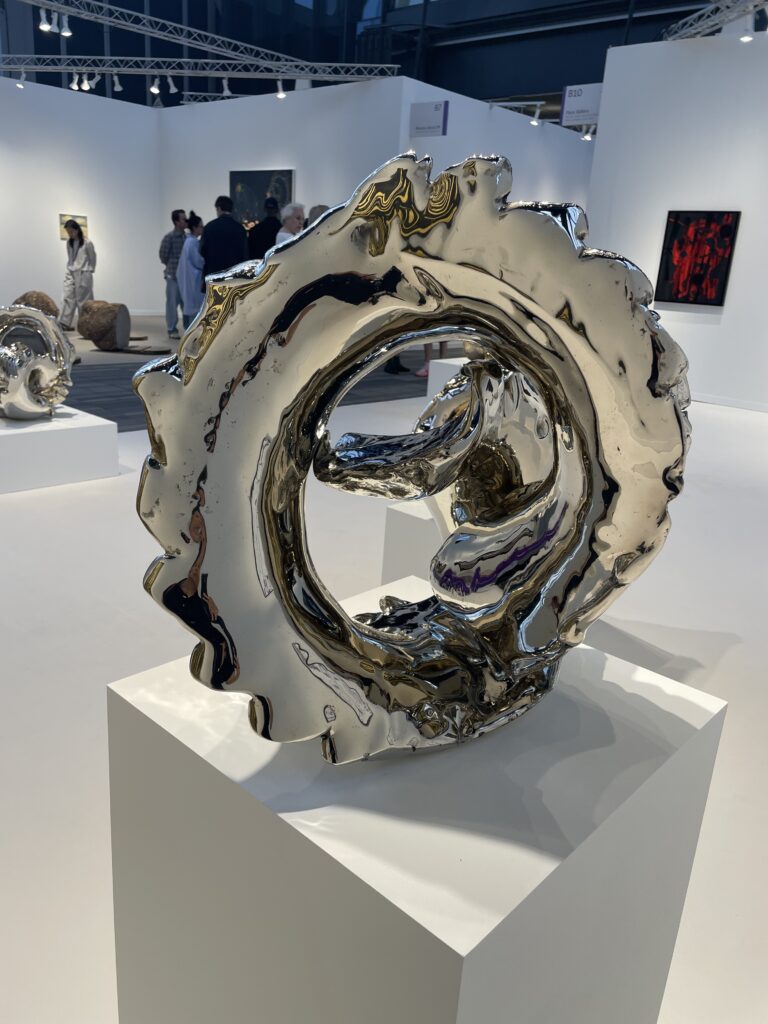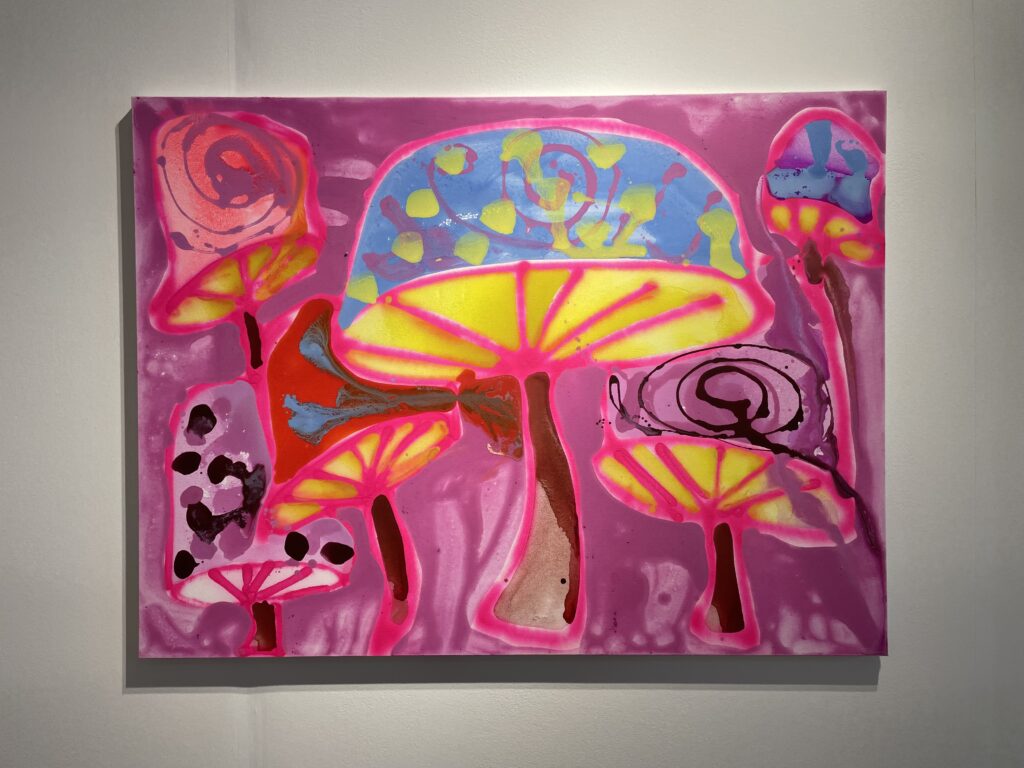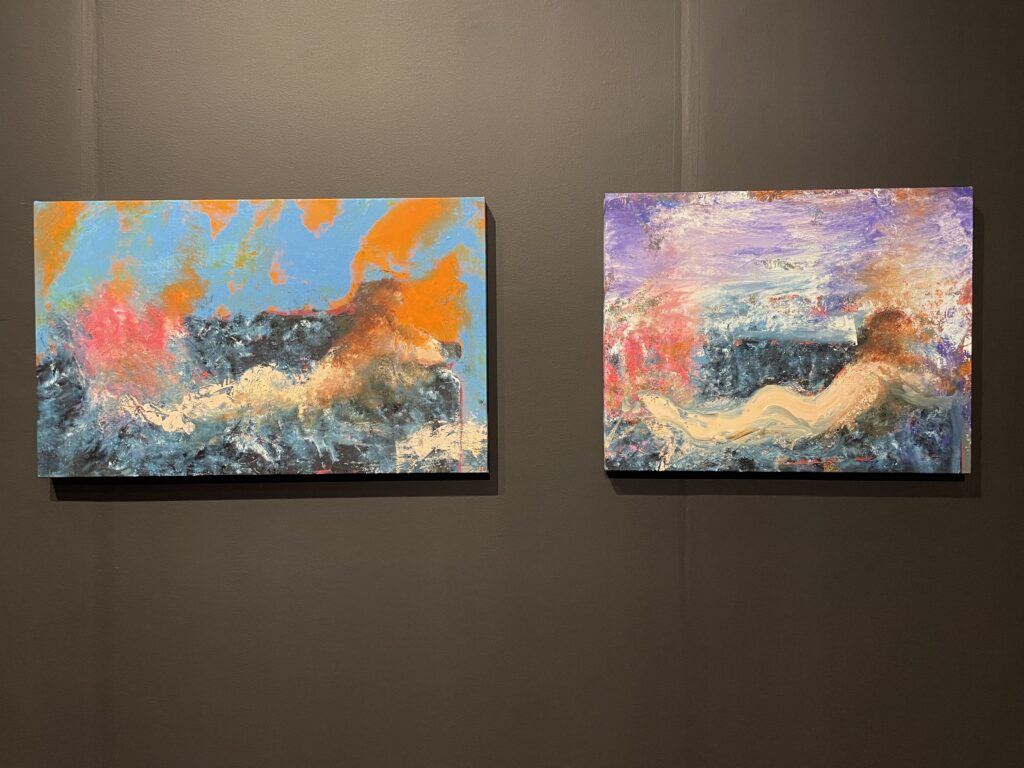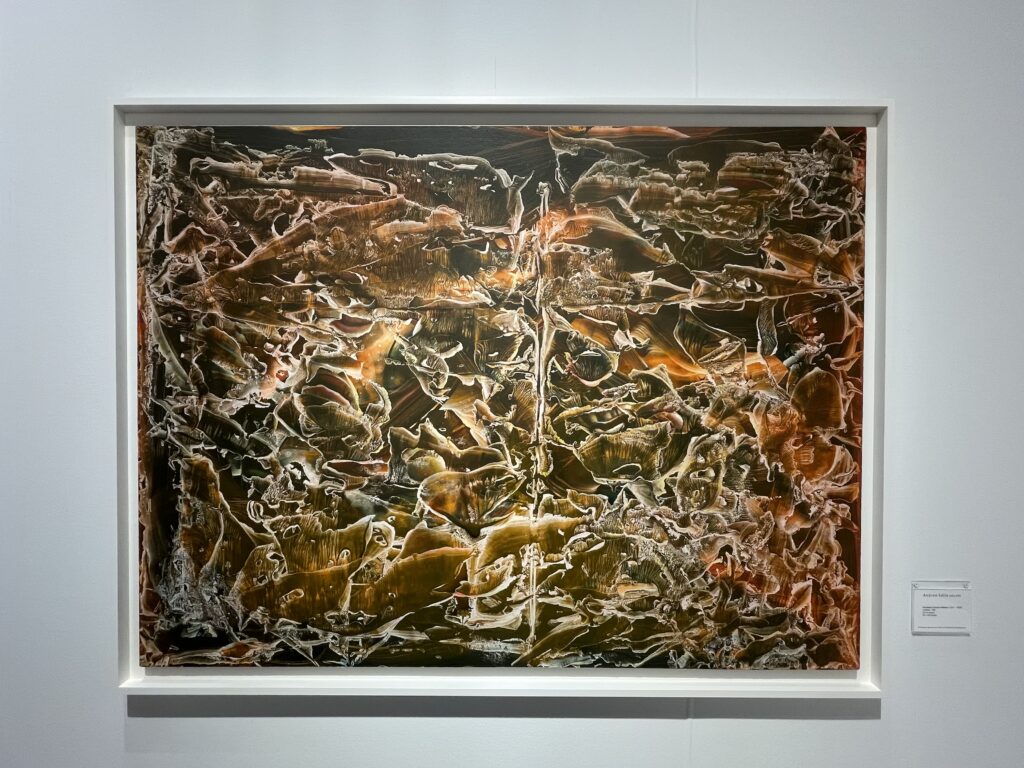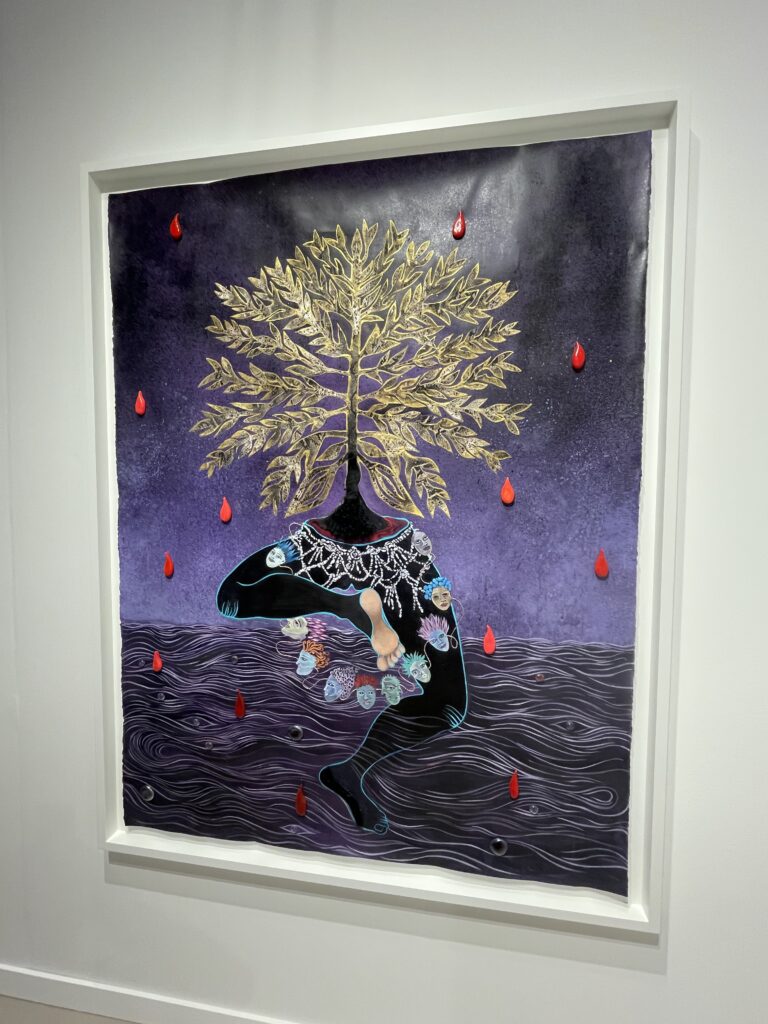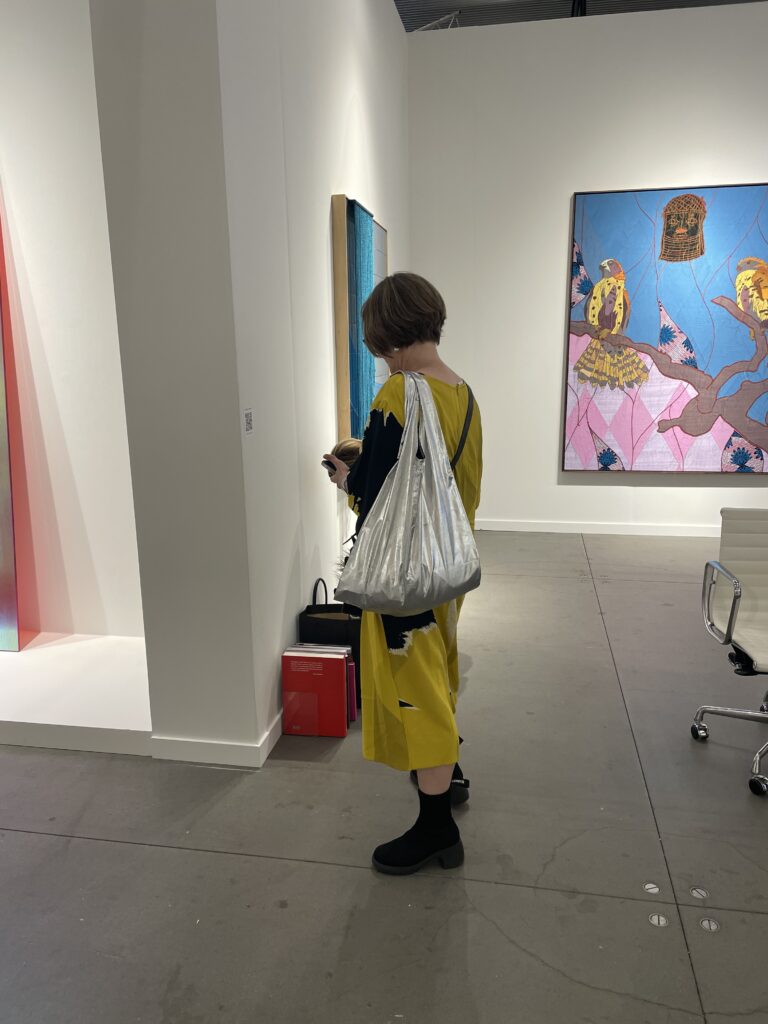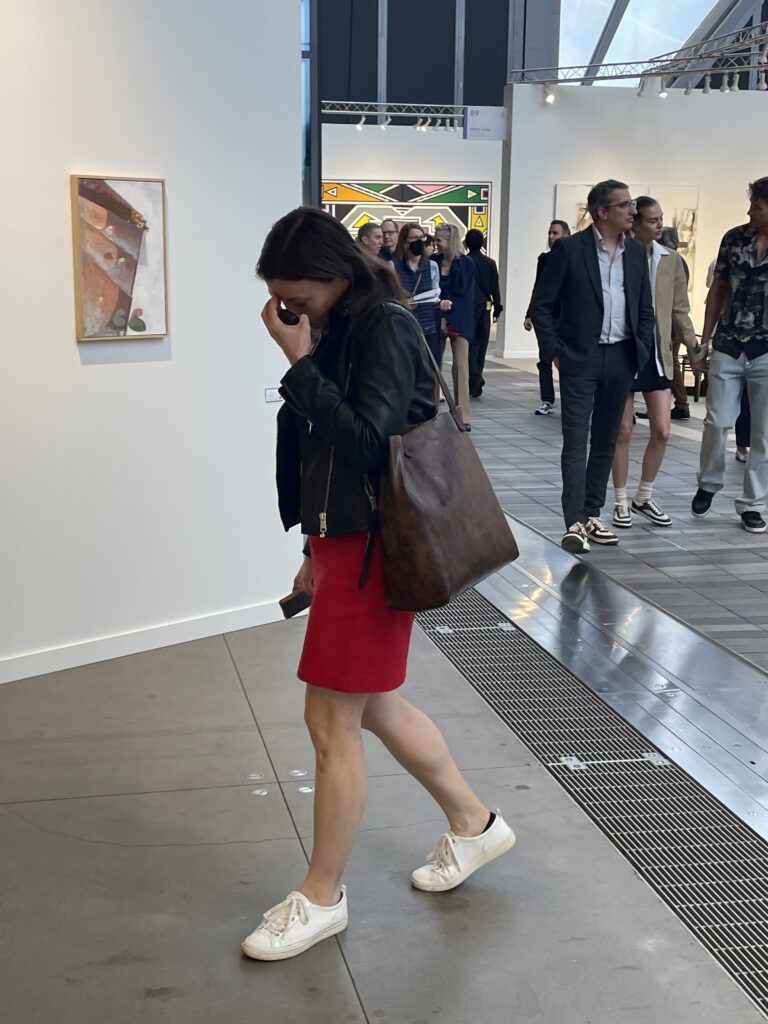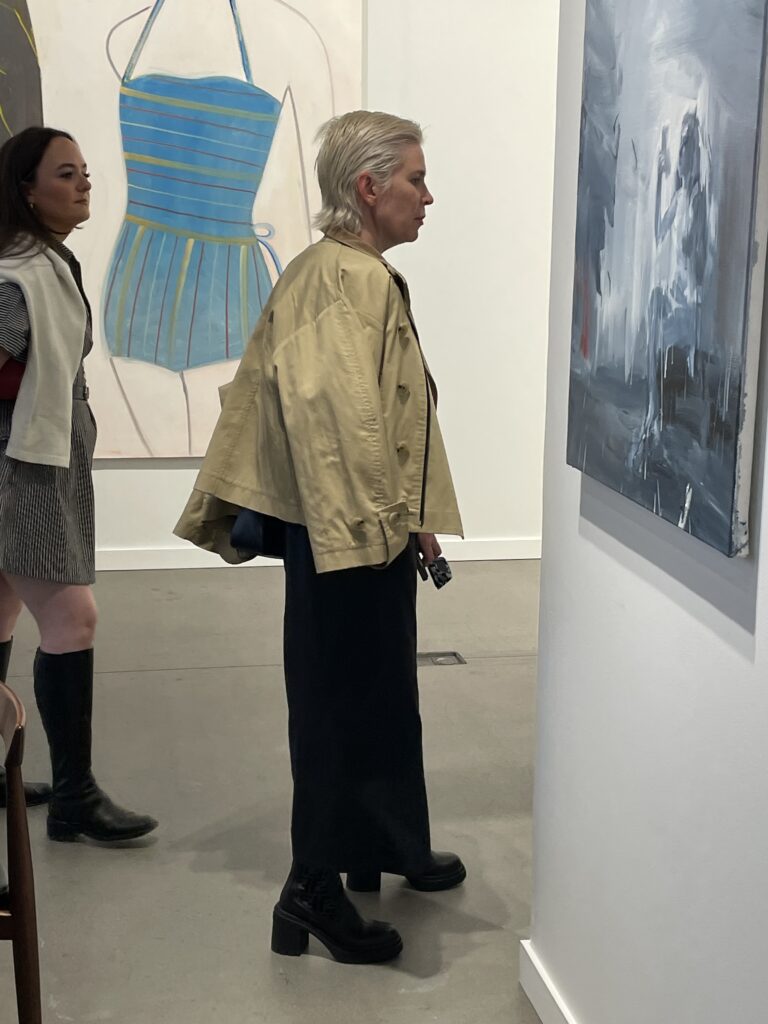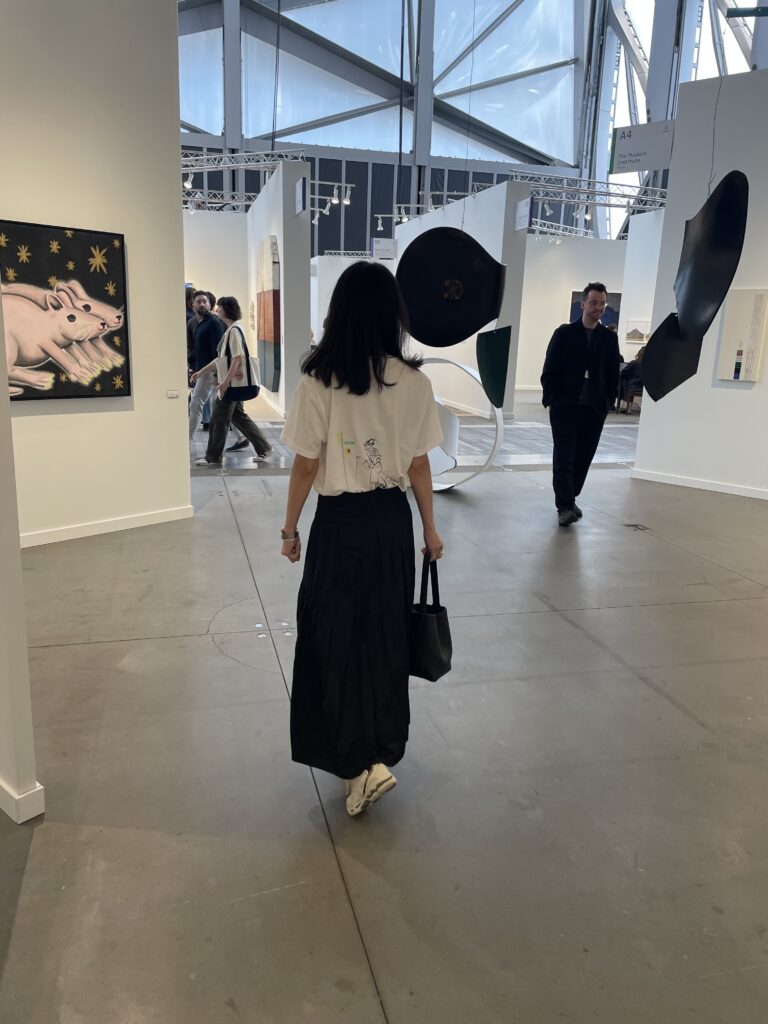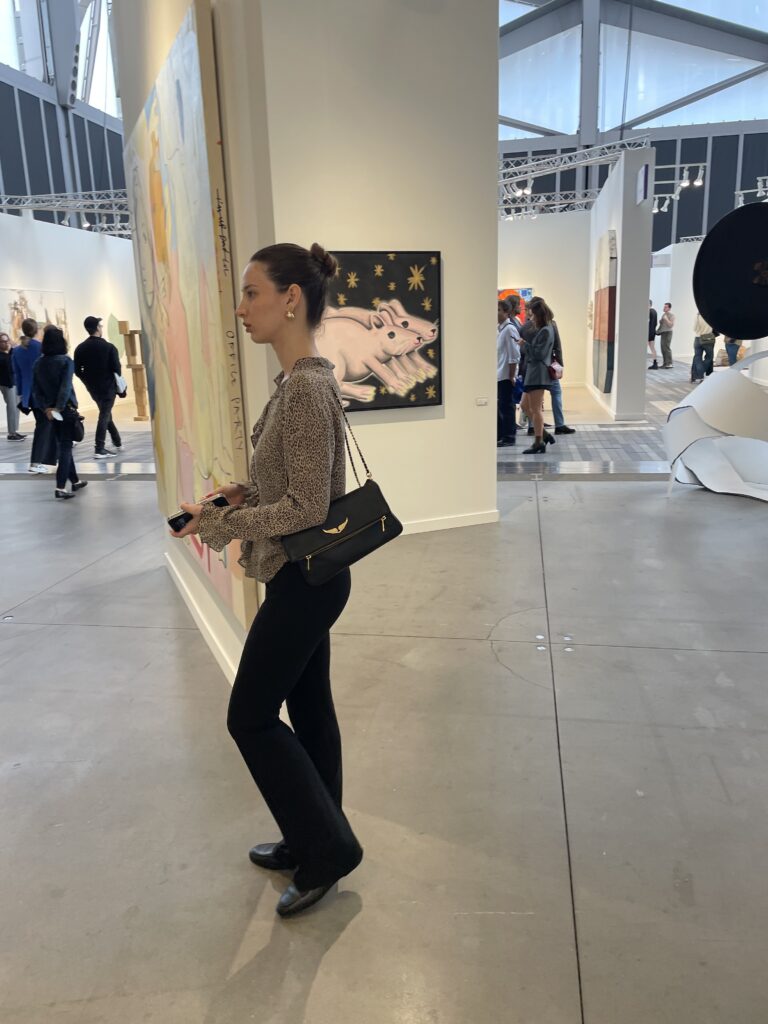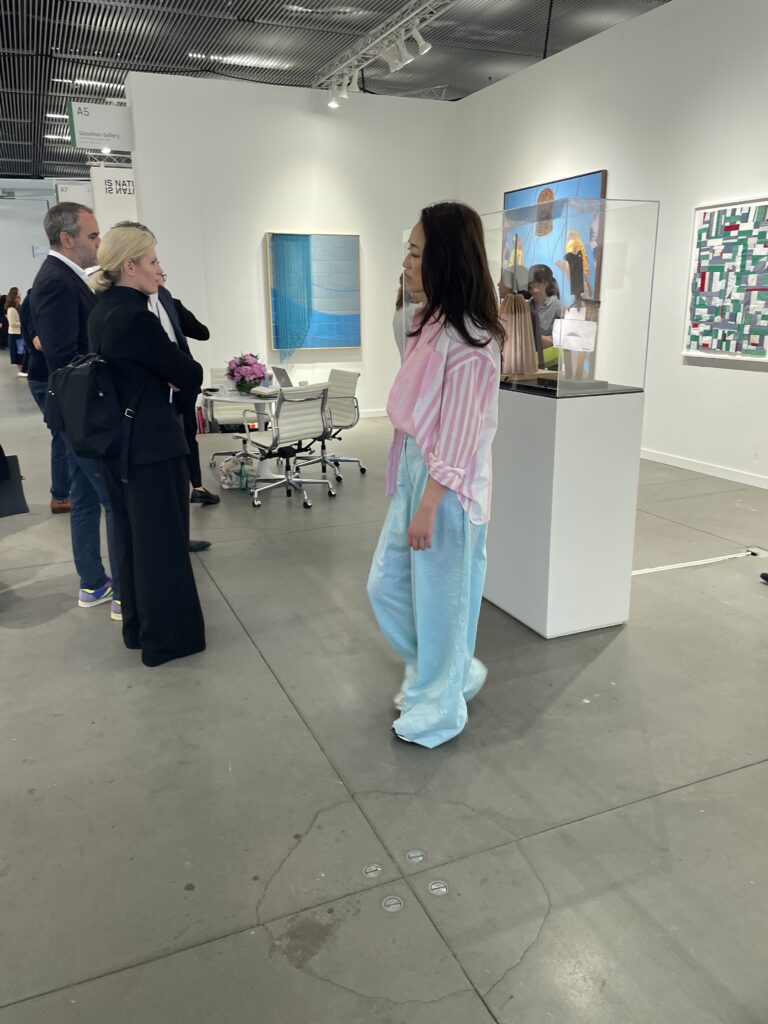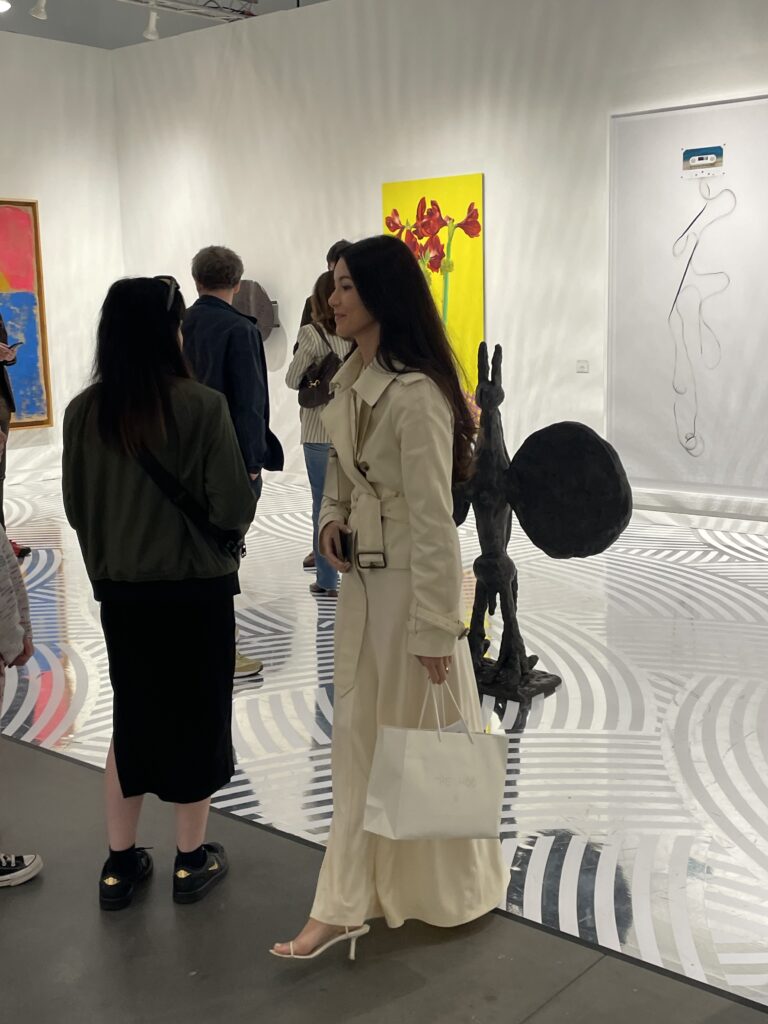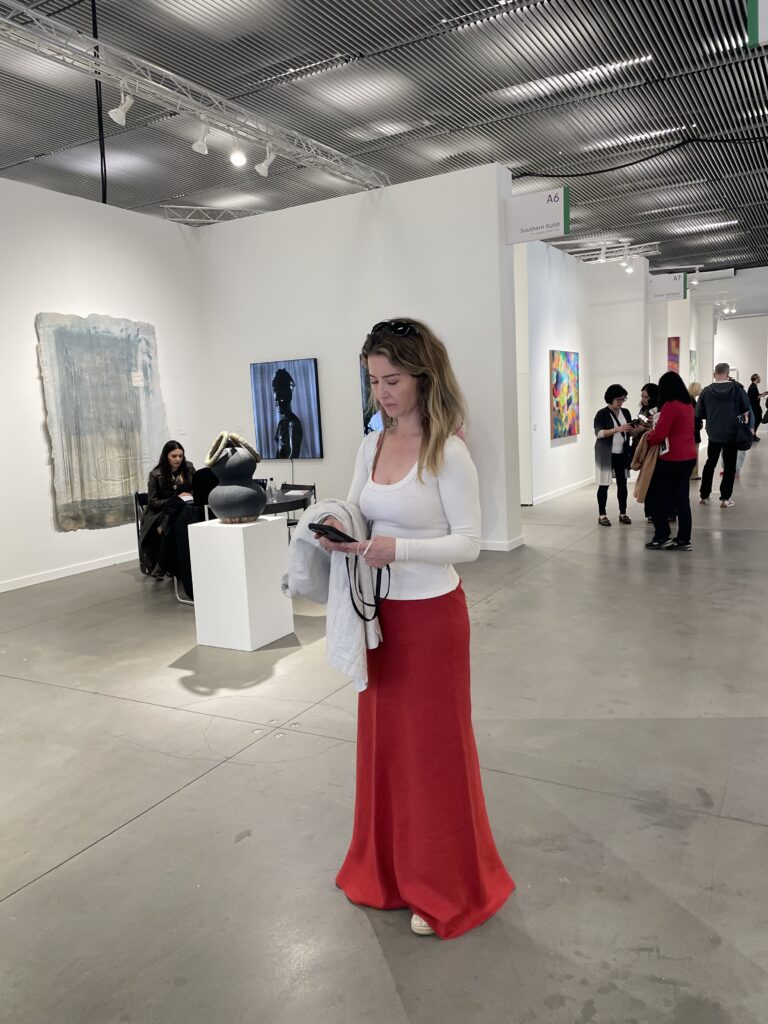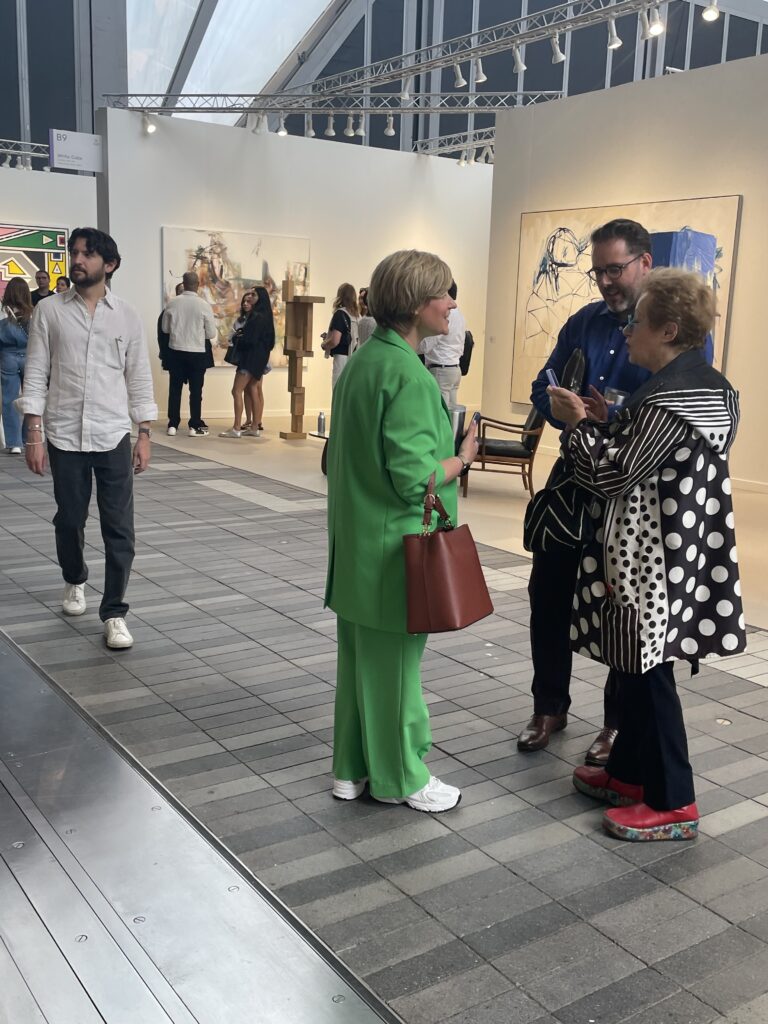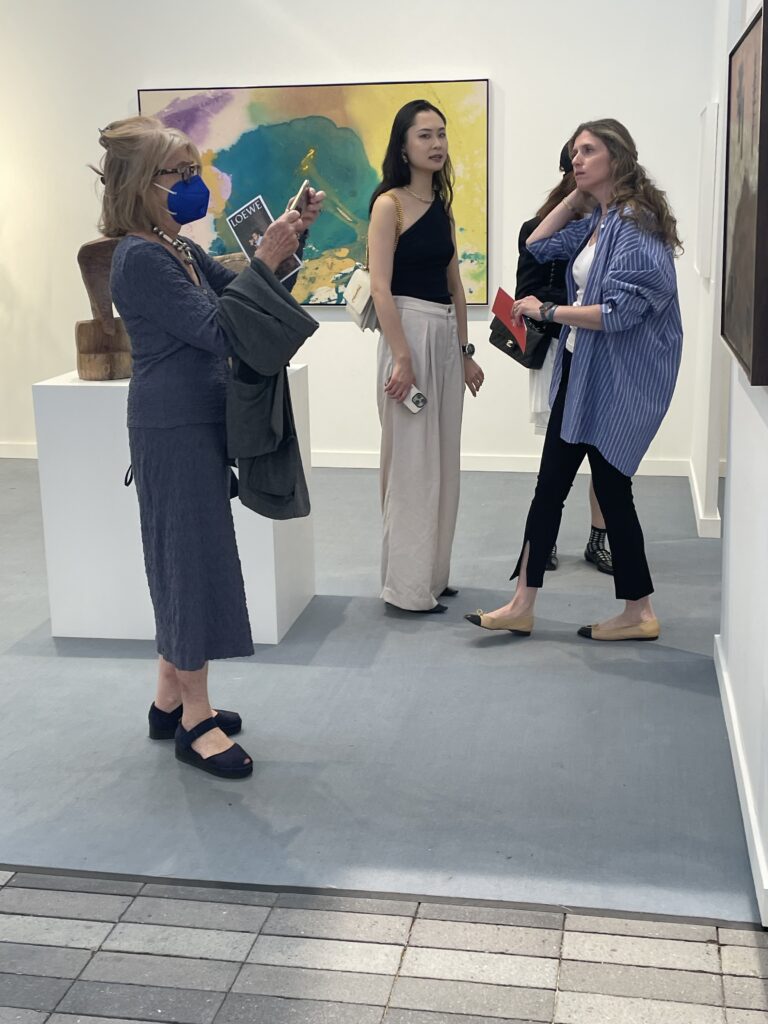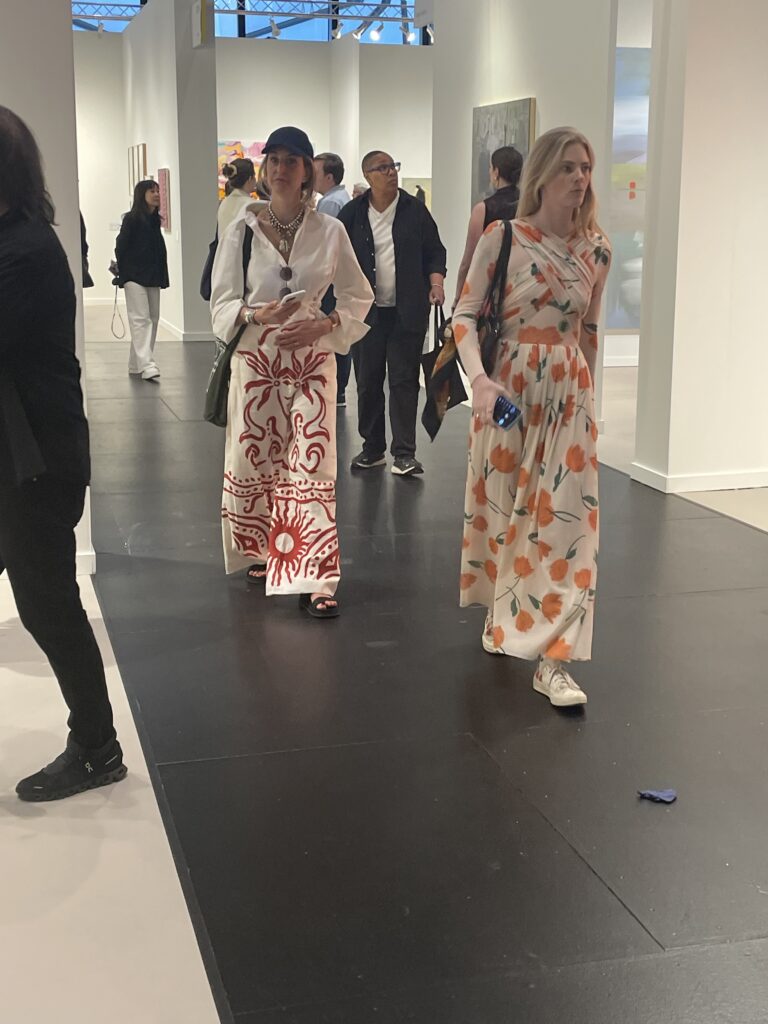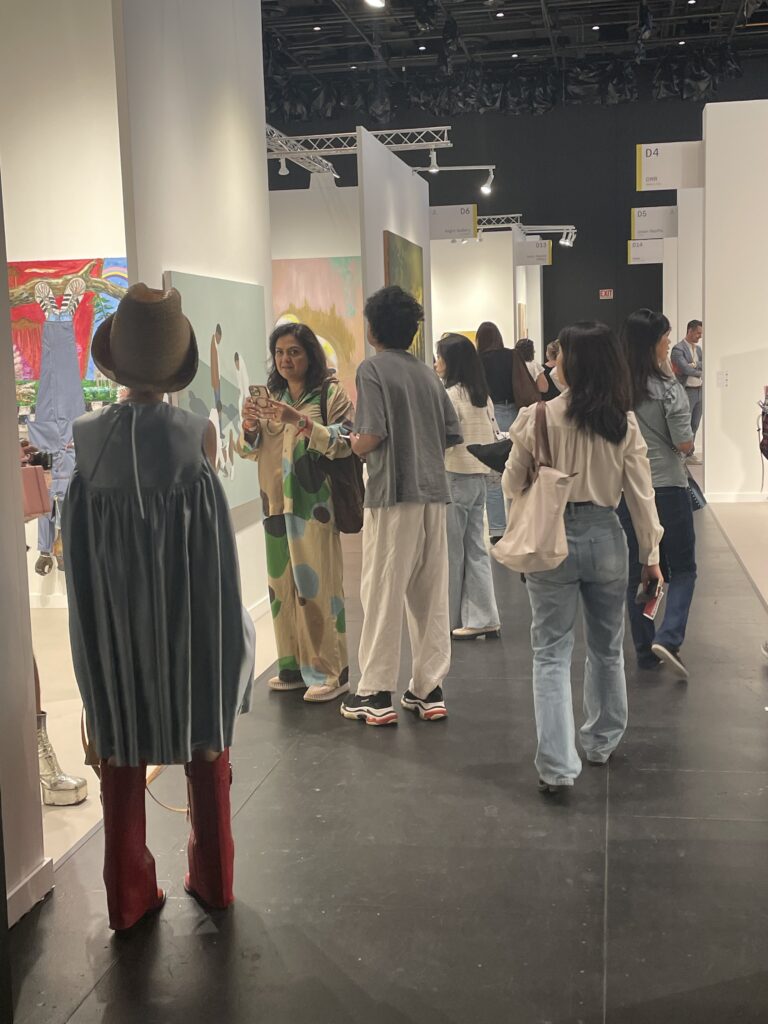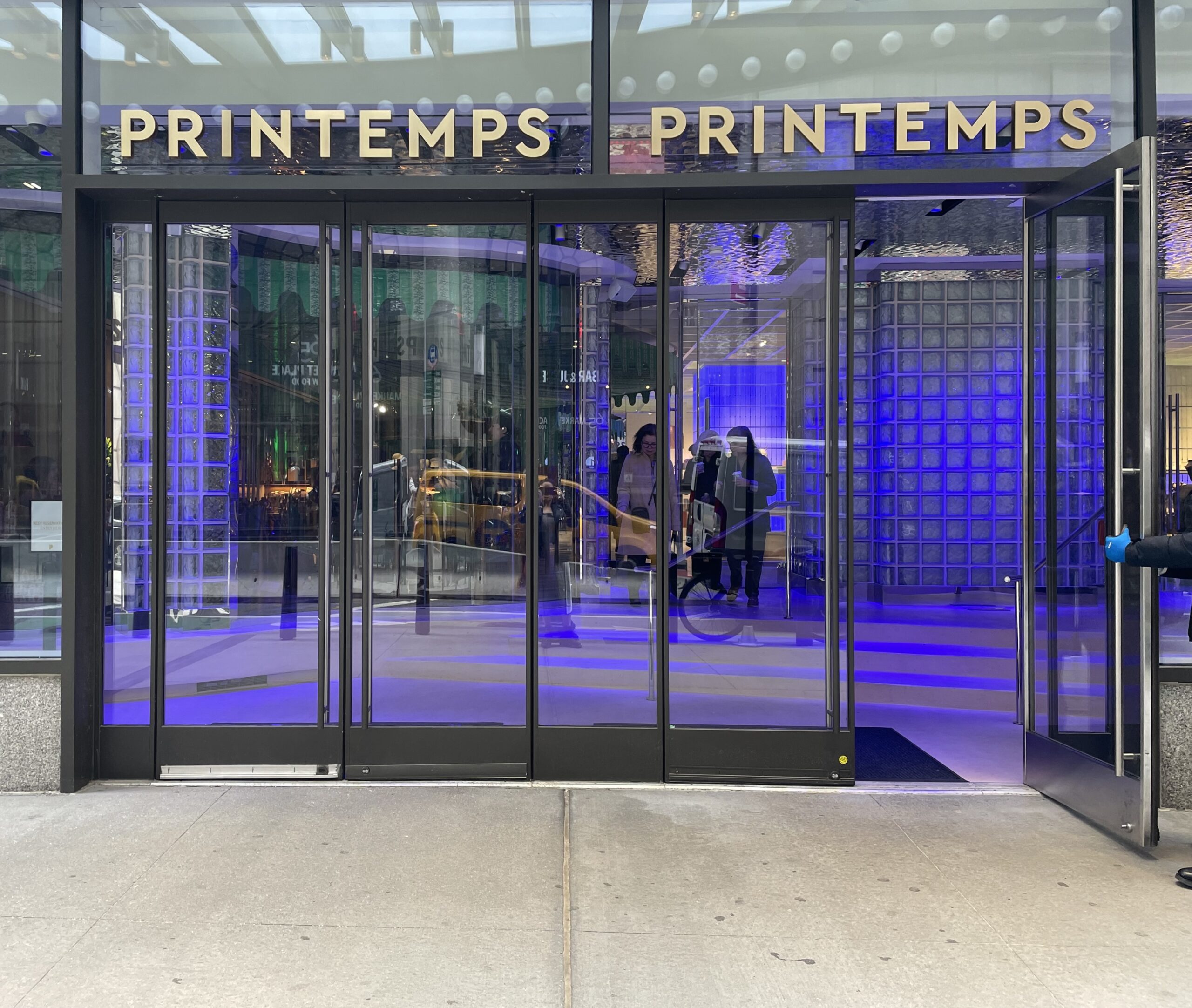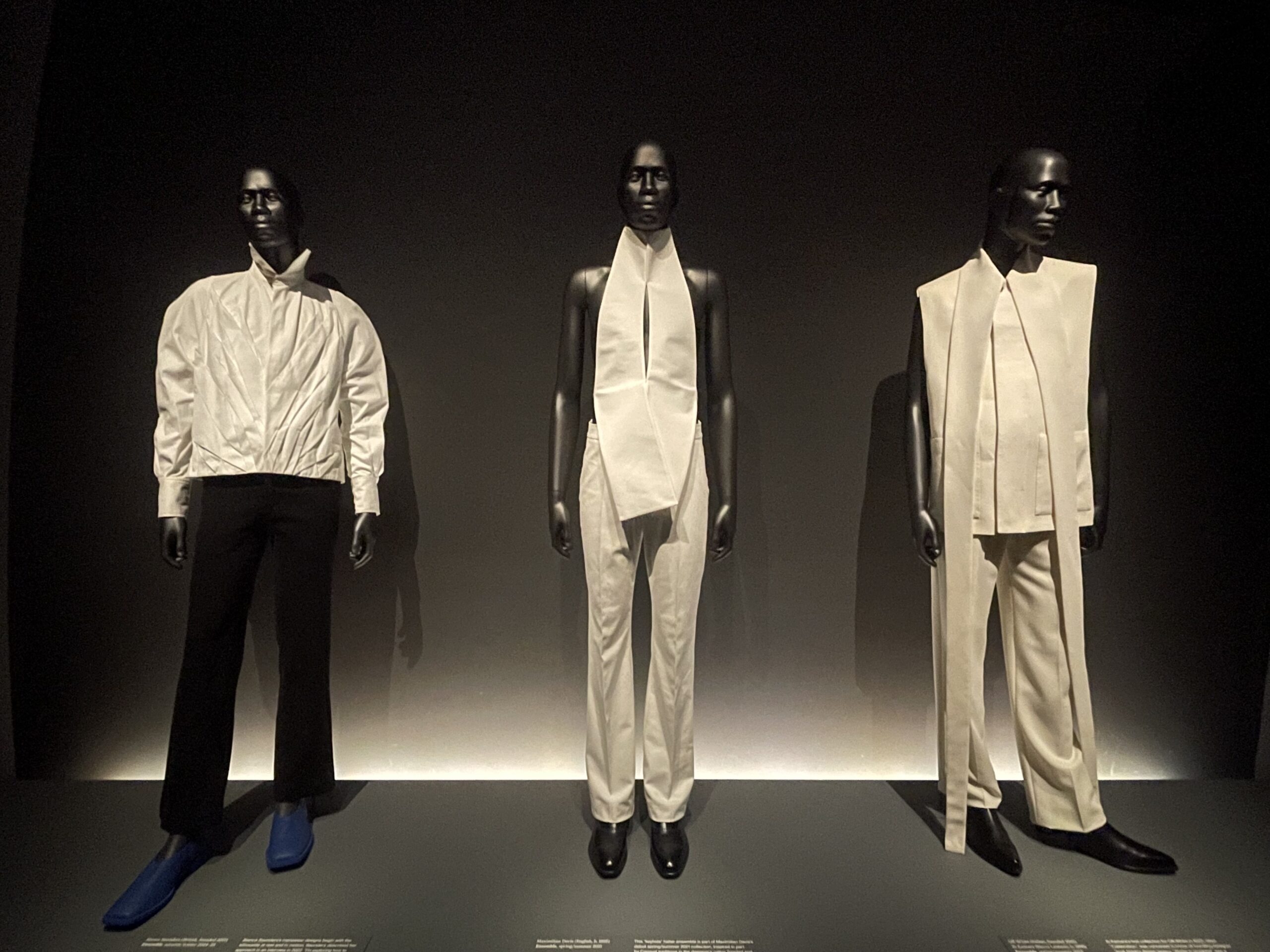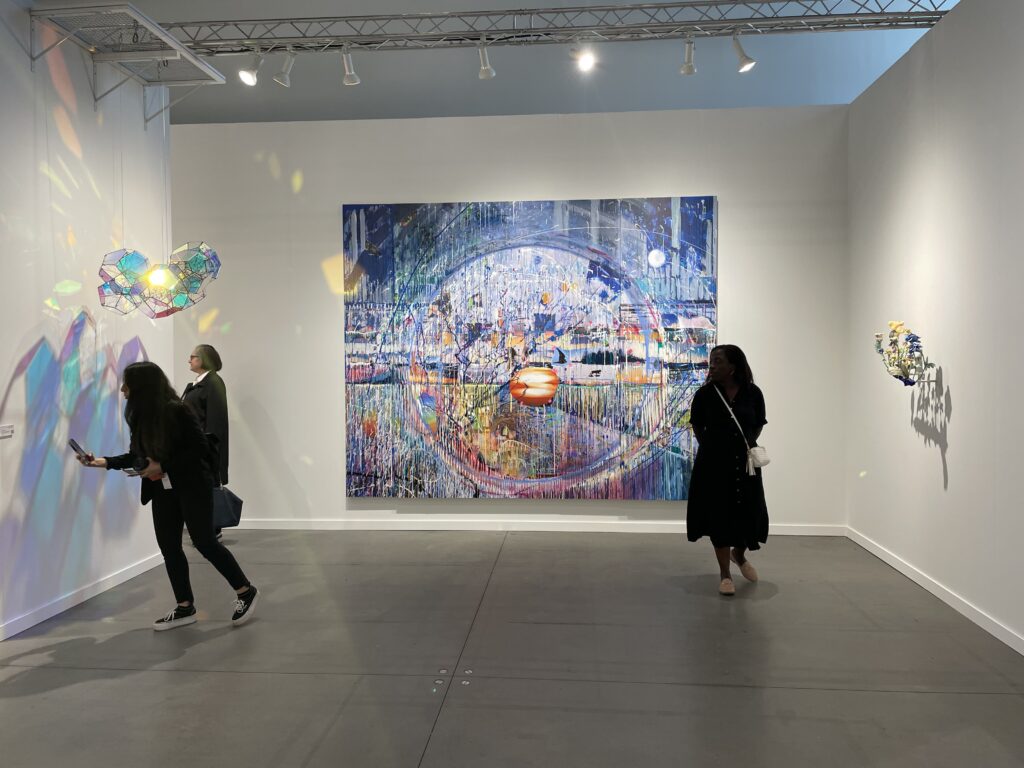
Frieze New York’s 2025 edition wrapped up on Sunday, and it cannot be emphasized enough just how important that the fair was to the New York art world at a time of such social and global upheaval. Approximately 25,000 Frieze visitors visited over 65 galleries from across the world. While one of the reasons that art fairs occur is ostensibly to sell the works on display, Frieze New York gave something different this time around:
It felt like a refuge — similar to what one would imagine it feels like to inhabit a monastic environment.
The clean white walls and sense of order evoked a feeling of calm and assuredness. It evoked a feeling that, somehow, we are all going to be okay despite the cold cruelty with which the arts and culture spheres are being treated by the political leadership in the United States.
The arts have traditionally been a bastion of resistance to authoritarianism, and the existence of art fairs of all sizes (local, national, and international) can continue to serve as a glimmer of hope in dark times. With the removal of government funding for the arts in the US, it is all the more crucial for arts fairs such as Frieze to continue unabated.
The worlds of art and culture also remain two of the only safe havens that we have left for folks to be who they are and who they aspire to be. International artists, who have always offered so much to our country, are rightfully respected and their work is elevated. In many other places in this country, people not native to the United States (or do not appear to be) are scorned, mocked, or treated with vile hostility. The arts and culture segment, thankfully, does not engage in this behavior and in fact soundly rejects it.
Art, in this case, acts as a source of comfort rather than simply inhabiting its expected space of provocation and challenge. This provided comfort is its own form of protest.
Frieze New York: Art
Thaddaeus Ropac hosted one of the more exciting booths at Frieze, with one of its star works being artist Raqib Shaw’s “Fall of the Jade Kingdom I – Paradise Lost Chapter II” (see the above slideshow). Despite one patron being overheard hesitating before calling the piece “disturbing”, it is impossibly detailed and does a stellar job at telling an in-depth story in visual form. It is easy to see that it took about a decade to complete. Other notable works by the gallery include pieces by Yan Pei-Ming, Joan Snyder, and Alex Katz, who paid his artistic respects to pioneering fashion designer Claire McCardell. To a writer such as myself with a fashion background, this was a pleasure to see.
James Cohan displayed a solo showing of Vietnamese-American artist Tuan Andrew Nguyen at its Frieze booth. Part of the showing includes two mobiles created in the style of artist Alexander Calder; one of them, “Outburst”, can be seen above. One of the things that make these artworks astounding is that they were created out of pieces of material deployed during the Vietnam War. It is fitting that, during such a globally combative time, Nguyen’s work takes these weapons of war and turns them into something beautiful — even inspiring.
Gallery Hyundai showed works by artist Moon Kyungwon. Her works were placed in conversation with the present sociopolitical landscape, but upon taking in each of the nine pieces (such as “Soft Curtain_Freedom Village”, which can be seen above), a sense of piercing loneliness overtakes the viewer. And yet, there is beauty to be found in that isolation. We live in a world where we can be shamed for wanting time to ourselves, but it is only natural to want to detach from the chaos and travel inward.
Carlos/Ishikawa | Chapter NY collaborated on a booth at Frieze New York this year. The two galleries featured, among other artists, works by Mary Stephenson (Chapter NY) and Moka Lee (Carlos/Ishikawa). Stephenson’s paintings have to be seen in person to truly experience them; there is a delicate form that they each take — particularly “Soft Shell” — and one can only stand in awe of the fragility that they convey. Lee’s “Phoning Hands” depicts a different form of fragility — that of the present-day attention span. A simple piece that shows a smartphone nestled (probably uncomfortably) in the subject’s hand while the person scrolls, it conveys the broken social bonds that we’ve left in our wake while ironically trying to strengthen those same connections.
Frieze New York: Fashion
The attendees’ fashion at Frieze New York this year was notably more bold and colorful than last year. Whereas 2024 saw the “quiet luxury” trend in full force, this year it seemed that those present were ready to express their sartorial tastes in a more vivid way. If you’re going to attend an art fair, you will be walking around for hours on end. Most frequent art show attendees understand this well, and as such they keep their footwear flat and simple. Within that description, though, you saw a variety of shoe choices, including ballet flats, athletic shoes, flat boots, loafers, and the like.
Women wore a lot of longer hemlined dresses and skirts, with a few exceptions. Pants mostly followed the longer trend, and didn’t adhere to strict tailoring; the same goes for tops. For men, of course you had the blazer/pants combo, but you also saw them loosening up their standards to include more laid-back fare.
Overall, it was refreshing to see that arts patrons and devotees were ready to enjoy themselves through what they wore while perusing the artworks available to purchase.
Art is nothing if not a forum for expression.
To purchase a subscription to Manic Metallic’s website, click here. To subscribe to Manic Metallic’s Substack newsletter, click here.
